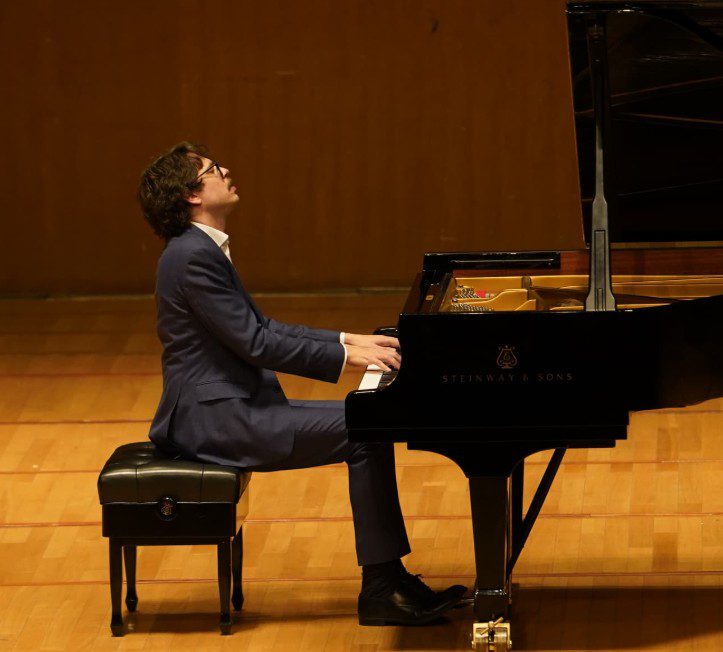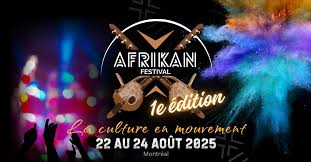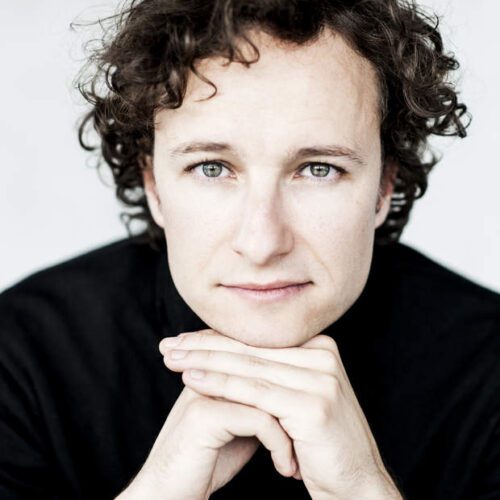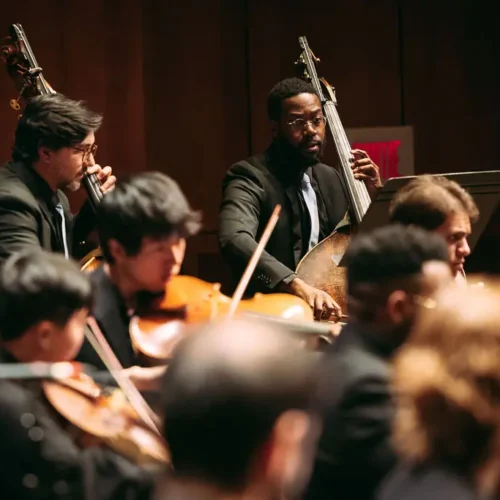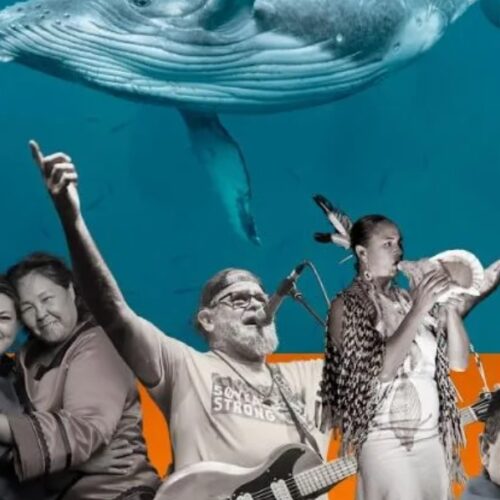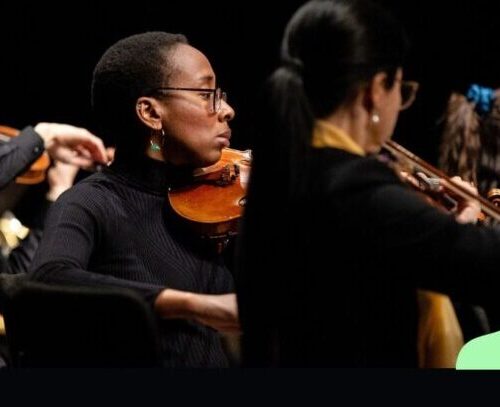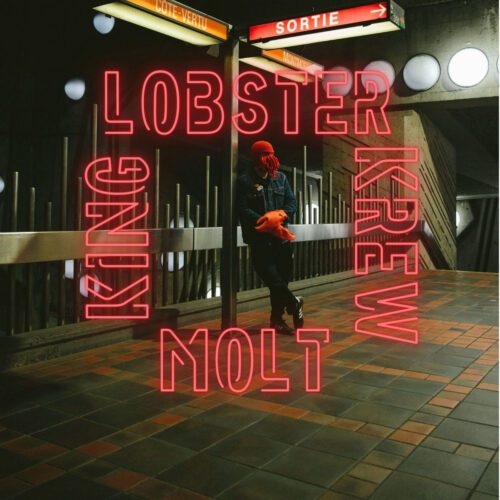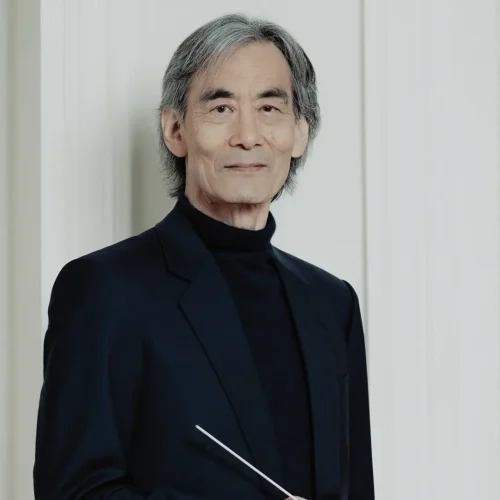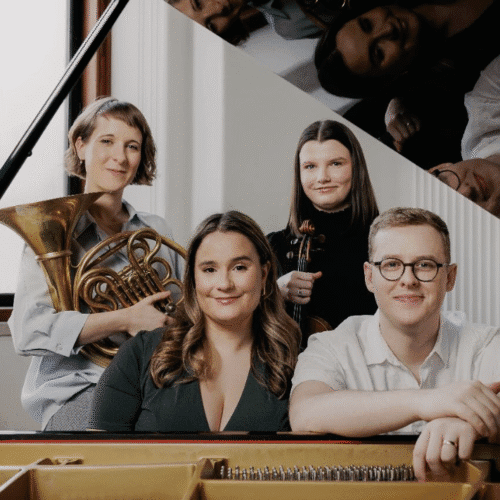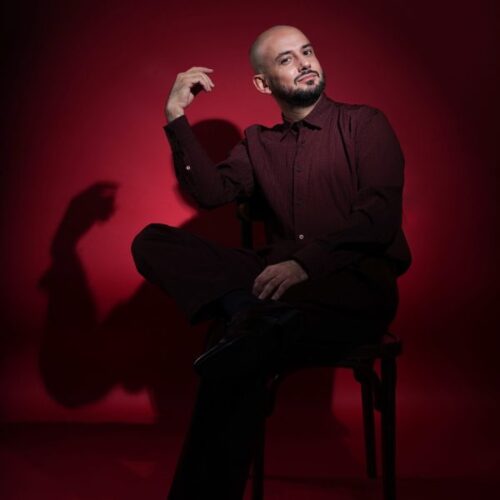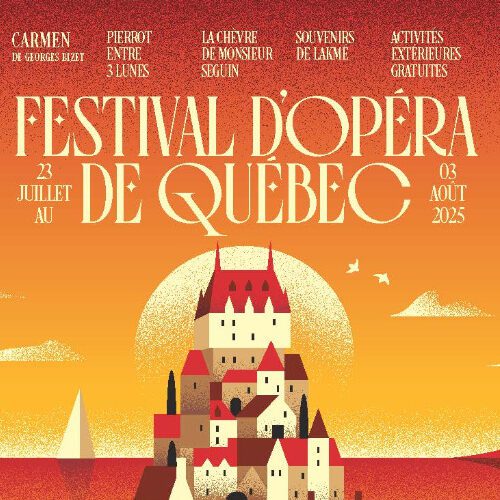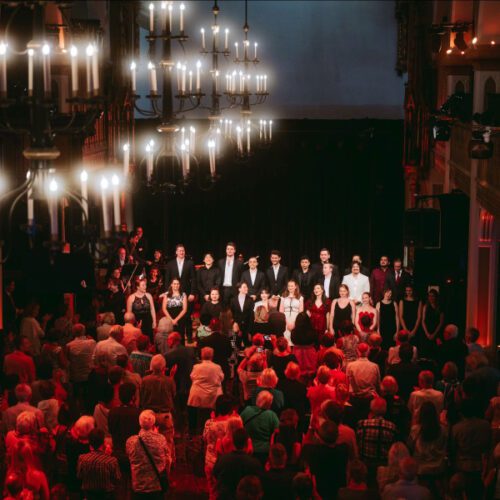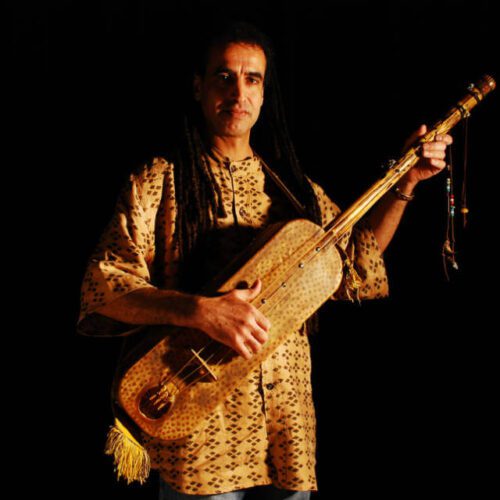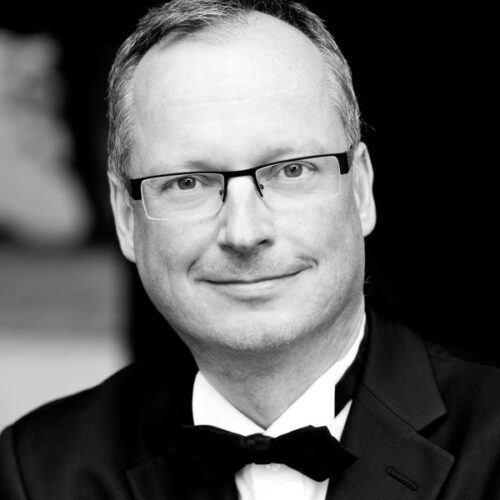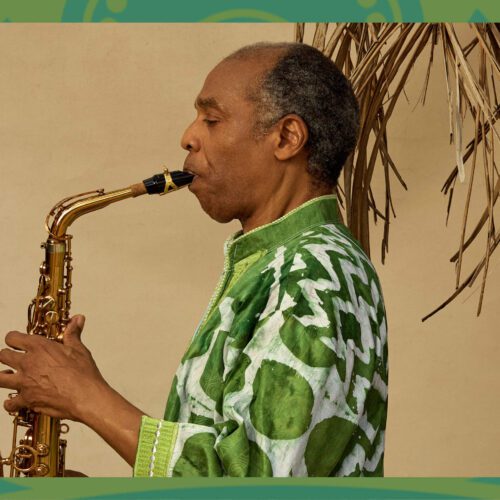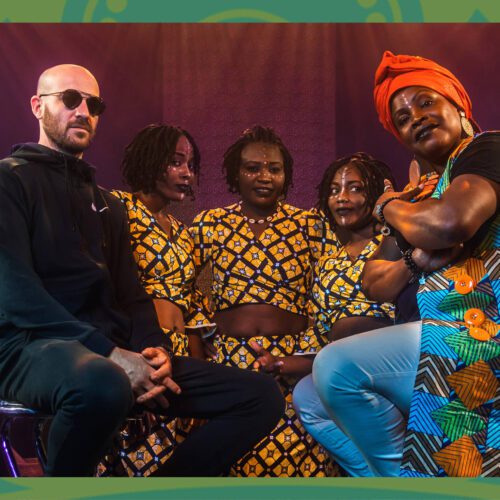Additional Information
Lucas Debargue is a concert pianist, but also a composer, and also increasingly known as a free thinker of piano playing, whose tonal universe he chooses to explore. The liberties he takes in interpreting great works earn him praise from his peers (revealed by a 4th prize at the Tchaikovsky Competition in 2015), but also the wrath of patent critics, as recently as this winter during a recital at the Philharmonie de Paris. Clearly, the French musician leaves no one indifferent. Alain Brunet first interviewed him in autumn 2017 for La Presse on the eve of a recital at the Maison symphonique, Debargue returned to play in Montreal in 2020, and here he is again, this time at Salle Pierre-Mercure (Sunday April 13, 3 pm) for a recital in keeping with his tastes and ambitions. Prior to his arrival in Quebec, he graces us with a long interview for the PAN M 360 community.
PAN M 360: You don’t quite fit in with most people’s idea of a concert pianist. Does this please you?
Lucas Debargue: Yes, absolutely. The artists I’m drawn to are those who can create a singularity. What motivates me to pursue my path is not a search for singularity as such. As I unravel this ball of my personal research into interpretation and composition, a lot of things come up that I also want to express through words and writing. I do a lot of writing, and I’m looking for a text that’s as good as a book, worthy of being shared and used by others. However, it’s not a question of giving my opinion, because personal opinions are given far too much importance these days, in my opinion. Personal opinion is only interesting if it feeds reflection. If I think something about a work of art that can provide answers, food for thought, and help me move forward, then I’ll share it.
PAN M 360: So you’re opposed to any peremptory discourse on the quality of a work and its mode of interpretation.
Lucas Debargue: Some music critics only express their standards without explaining, and this way of expressing opinions without sharing is widespread on all social networks these days. It’s better to leave room for uncertainty, one of the most important values. In art, uncertainty is just about everything. If you don’t accept that you know very little at the outset, you’re in trouble. If you don’t experience this infinity of possibilities, this vertigo, you’re not an interpreter. What am I going to believe and choose when I delve deeper into a work, and how am I going to choose an interpretation based on elements deemed solid and viable? It’s close to research. I became passionate about musical interpretation after having done the same for literature and text analysis. So I don’t believe that analyzing a work reduces the pleasure of listening to it; on the contrary, it increases it. But I do assume that the mystery of a work will always remain intact, even if new dimensions are understood. The same goes for science: no scientist can tell you how life works! In music, many things remain irrational, mysterious and very difficult to explain. But I believe that what can be explained should be explained, and these explanations should be shared.
PAN M 360: Does the performer then also have to provide explanations in his approach to the work?
Lucas Debargue: Performer training is curiously organized. The emphasis is on instrumental work, approach to the instrument, fingering, execution and so on. But from the point of view of ear development, we stop pretty quickly at a certain level where it becomes writing. And since you’re working on a text, it becomes difficult to go further in interpreting a text without being able to produce a text yourself. When you’re a rhetorician, it’s hard to embody a text if you can’t produce one yourself. But in classical music, interpretation and composition are two different paths to follow. If you’re destined for interpretation, you’ll only reach a low level of understanding of composition. For me, on the contrary, an interpreter must get as close as possible to the composers, based on what they have left us, first and foremost the score and other elements – biographical, etc. You need to know how to read a score on several levels.
PAN M 360: Are you emphasizing the fact that performers can only read a score at one level?
Lucas Debargue: If the performer isn’t able to enter into the compositional process, there’s a problem. It becomes difficult to distinguish between the black score of notes and the raw information—the harmonic framework of the piece —that guides things. The basis of a piece is its harmonic framework, the dominant, the tonic. Another important point is that the score we read is the last level of realization. Then you must go back in time, peel off the layers and find the plot. The plot is the harmony around which the piano is orchestrated.
PAN M 360: And you’re suggesting that the performer isn’t encouraged to take this step of getting closer to the composer.
Lucas Debargue: At the beginning of the 20th century, we still had Rachmaninov, Prokofiev, Medtner… That stopped in the second half of the 20th century, because you had a very significant modernist offensive. This offensive is worthy of mention in the history of music, but it had serious consequences, including ultra-specialization. A composer has become only a composer who no longer has any connection with instrumental reality. The composer starts writing things that are impossible to play on an instrument. The instrumentalist then becomes completely disconnected from the composition, to the point of becoming a servant, a submissive performer of the score, without a critical eye.
For me it’s a big problem, it’s terrible and it’s completely dishonest to say “I’m a humble interpreter-servant of music.” But no, you can’t put yourself like that as an interpreter. Obviously, you need a lot of charisma on stage to embody the works; you find yourself at the center at some point, even if you’re not the composer. But you can’t play the humble servant at the centre. You can’t imagine an actor saying, “I’m Shakespeare’s humble servant when he plays Hamlet.” No, he has to be Hamlet; otherwise, it doesn’t work.
And so, we have to get closer to the composers technically, by getting closer to the writing, by having more knowledge and mastery of these elements, and then by taking the role of the performer much more seriously in the place he has in the creation of a work. The work remains mute when the performer is not there to take hold of it.
When we play Beethoven, we team up with Beethoven, even if Beethoven is no longer with us, to finally recreate a Beethoven sonata for the public. And the aim is to shock the audience. It’s not about doing it again, imitating so-and-so’s version. It has to be a shock.
PAN M 360: Let’s talk about Sunday’s program in Montreal: Fauré, Ravel, Scriabin and a work by yourself. Perhaps there’s no reason to justify these program choices, but let’s ask the question: why play a work composed by a pianist who isn’t 30 years old in 2025, and other works composed in the late 19th and early 20th centuries, more or less 125 years before the present day?
Lucas Debargue: Superficially, I’d say that Ravel and Fauré had a link in their lives, since Ravel attended Gabriel Fauré’s composition classes, although not for very long. He said in his correspondence that Fauré gave him much more than just technical aspects.
Ravel did this with André Gedalge, his harmony and composition teacher, apparently a genius when it came to pedagogy because he also trained Darius Milhaud and several generations of composers. Geldage was apparently a very, very free spirit who managed to convey the essentials of musical construction, logic and composition, while at the same time really respecting the composers’ individuality. In other words, he was not at all like harmony teachers like Théodore Dubois or Ambroise Thomas, who were very rigid about what harmony should be. Gedalge was really open-minded and so was Fauré, much more so than his friend Saint-Saëns – of course, Saint-Saëns is also a brilliant composer, but I think the fact that he was very intolerant of modernity.
For example, Ravel dedicated his Jeux d’eau to Gabriel Fauré, which I play in the Montreal program, and I thought it would be interesting to put them together. These two men knew each other from a different generation – Fauré was born in 1845 and Ravel in 1875.
And it was interesting to see the trajectory of a Fauré, so I chose five pieces from different periods of Fauré’s life, so that we could see his trajectory from a rather familiar salon romanticism to a form of modernity, tonality pushed to its very limits, quite experimental, very dissonant things. As for Ravel’s research, he found his language very quickly, and in the end didn’t evolve too much from there. In other words, he’s in the works of the end of his life, but his harmonic language, with some of his earliest pieces, and there are some of the characteristics of Ravel’s language in the Jeux d’eau and the Sonatine, which are among his first great piano pieces.
For me, it was already interesting to include in the same program, in two different parts, a work written at the same period, and a sonata written at the same period, which have common objectives, common intentions on the part of the composer, but through different means. Ravel’s sonatine is a sonata.
A sonatine is a sonata, but it’s a miniature sonata. And Ravel wrote this sonatina at a time when Paul Dukas was writing his gigantic 45-minute piano sonata, and when there was the kind of Romantic or post-romantic overkill seen in Mahler’s symphonies, for example. With Ravel, there was very quickly a desire to get down to the essentials, to take less time to say everything, to be concise.
And in this sonatina, he demonstrates this brilliantly, because it’s really a sonata, even a cyclical sonata, with the three movements based on the same thematic material. All three movements are based on the same thematic material. We’re in a homogeneous harmonic universe, in all three movements, and in 12 or 13 minutes, everything is said.
PAN M 360: And what does Scriabin have to do with it?
Lucas Debargue: I like to put this sonatina by Ravel on the same program as this work by Scriabin. For one thing, they’re in the same key (F sharp and F sharp minor), and it’s interesting to see how the two composers solved the problems differently. I also made this choice because Scriabin also wanted to write a piano sonata that didn’t need 40 or 45 minutes to say it all. So he managed to fit his sonata into 20 minutes, four movements. What’s extraordinary about Scriabin, despite this brevity, is that he manages to give this sonata a symphonic dimension, with a journey from the first movement to the last, a journey that is truly symphonic and philosophical, metaphysical. Scriabin was very inspired by Nietzsche, so there’s this philosophy of transcendence through suffering, through hardship, of actually succeeding in moving from darkness to light. There’s a whole kind of esotericism there, which Scriabin was already trying to translate into music.
PAN M 360: Between Fauré-Ravel on the one hand, and Scriabin on the other, there’s your work. Which is it?
Lucas Debargue: I wanted to feel warm, to be well surrounded. Ravel, Fauré and Scriabin are among my influences, of course. I also used neo-baroque elements in this piece. There’s a minuet, as there is in Ravel’s sonatine, and there are dances, like some of the Fauré pieces I’ll be playing. Behind the appearance of a neo-baroque suite, of a journey from beginning to end, there are also thematic links between the five parts. But that’s not what you traditionally find in a suite of baroque dances; there aren’t necessarily common motifs. Here, my entire suite is built on the same materials and harmonic tendencies. There’s a real progression from the opening to the final gigue.
PAN M 360: Beyond this insertion, can we talk about a theme for this program?
Lucas Debargue: For me, it was the idea of placing my own composition, my first major multi-movement piano composition, in the midst of works that share, or rather this piece of mine shares with these other works, the concern for a kind of transformation. It’s a program that could be called Transformation, because with Fauré, it’s not so much within the pieces as between them, where you can measure the whole journey between the young Fauré and the late Fauré, how he developed his harmonic language. And in the other pieces, it’s really how Ravel organizes a perfect sonata form, starting from the same thematic material that is transformed and varied in very subtle ways, and how in Scriabin, there’s really this quest for the absolute, this transformation.
PAN M 360: There’s a 125 to 150-year gap between the works in the repertoire you’ll be performing and your own. In other words, the piano, music, concepts of harmony and so on have evolved from the beginning of the 20th century to the present day. Yet, you are part of a pianistic aesthetic that corresponds to that era. How do you negotiate your approach to the piano, piano composition and the current era you find yourself in?
Lucas Debargue: I understand what you’re saying, and at the same time… I don’t try to demonstrate anything ideologically when I write music; I really write the music I hear, the music that comes to me. For my part, I pick up where the story left off for me. I do what feels most sincere, honest and exciting. I want to write music that I’d like to discover for myself as a pianist. I find too much excitement in what we call tonal language, or even what we call, to be more precise, functional language. What counts here is what fascinates me: mastering the language of Bach and Ravel and Chopin. That’s what I want to master. Much more than the language of more recent composers who, for me, speak a different language. I don’t know who speaks that language… not me, anyway.
Program
Saison Prodige – Lucas Debargue, piano
MAURICE RAVEL, Jeux D’eau, M.30
MAURICE RAVEL, Sonatine, M.40
GABRIEL FAURÉ, Mazurka en si bémol majeur, op. 32
GABRIEL FAURÉ, Barcarolle no.9, op.101
GABRIEL FAURÉ, Nocturne no.12, op.107
GABRIEL FAURÉ, Impromptu no.5, op. 102
GABRIEL FAURÉ, Valse caprice no.4, op. 62
-ENTRACTE-
LUCAS DEBARGUE, Suite en ré mineur
LUCAS DEBARGUE, Prélude
LUCAS DEBARGUE, Pantomime
LUCAS DEBARGUE, Sarabande
LUCAS DEBARGUE, Menuet Guerrier
LUCAS DEBARGUE, Gigue
ALEXANDRE SCRIABIN, Sonate no.3 en fa dièse mineur, op. 23.
